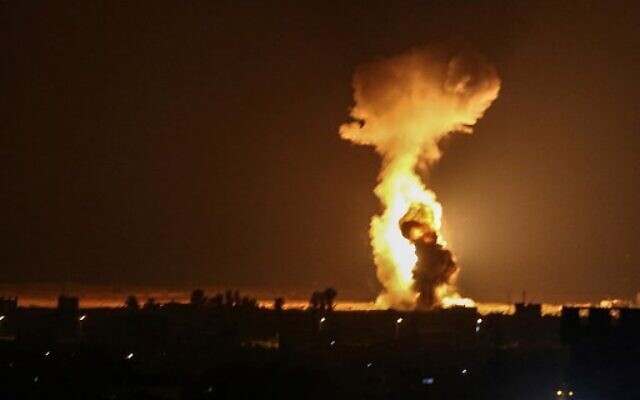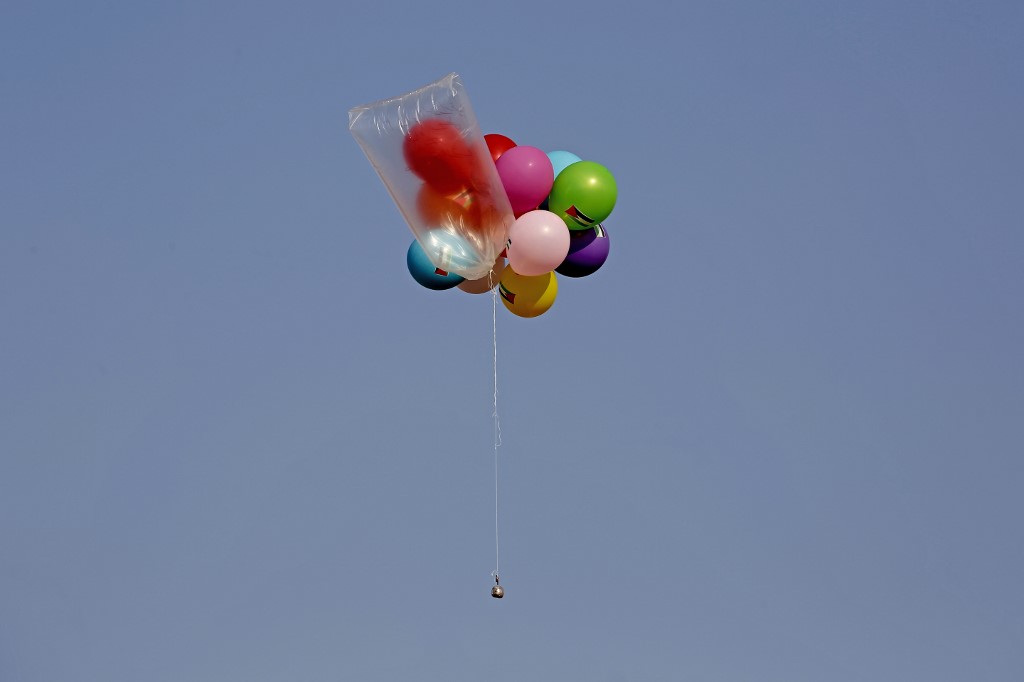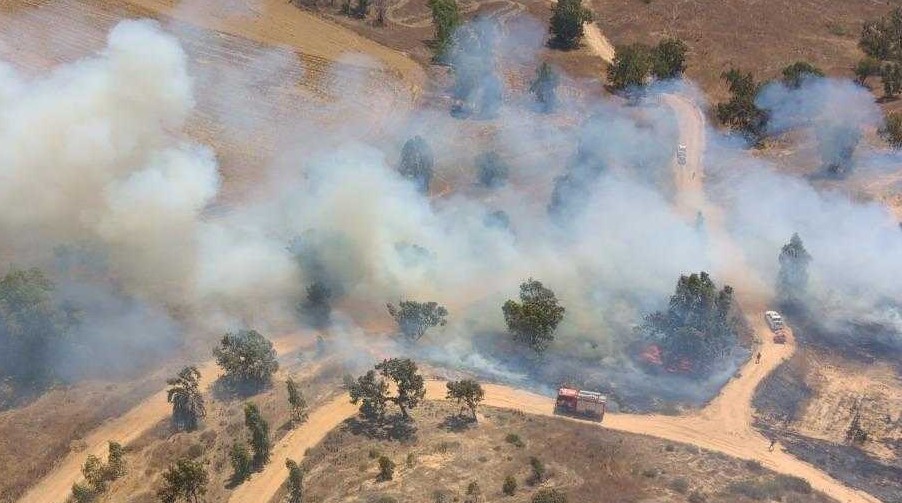IDF says warplanes, tanks, helicopters hit terror sites after airborne devices spark over 80 fires in recent days; Gaza media says Israel bars fuel imports at Kerem Shalom crossing

Israel attacked targets in the Gaza Strip in the early hours of Thursday morning in response to a spate of balloon-borne arson and explosive devices launched from the Strip into Israel in recent days.
The Israel Defense Forces said that Israeli warplanes, combat helicopters and tanks hit a number of targets belonging to the Hamas terror group.
“During the attack, military facilities of Hamas’s naval force, underground infrastructure and observation posts belonging to the Hamas terror group were attacked,” the IDF said in a statement.
“The attack was carried out in response to balloons with explosives and incendiary balloons [launched] from the Gaza Strip into Israeli territory in the past week,” the statement said, adding that Israel holds Hamas responsible for all acts in and emanating from the Strip.
Dozens of balloon-borne devices were launched into southern Israel on Tuesday and Wednesday, igniting over 80 fires.
Gaza-based media said the strikes hit targets across the Gaza Strip, from Rafah in the southern part of the territory to Beit Hanoun in the north. The reports claimed the airstrikes were the most intense response by Israel in the most recent round of escalation.
Hamas observation posts were attacked close to Gaza City and Deir al-Balah in the central part of the Strip, Hamas-linked media said.

Gaza media also said Israel banned fuel from entering the Kerem Shalom commercial crossing between Israel and the Gaza Strip until further notice. A spokesperson for Israel’s military liaison to the Palestinians did not respond immediately to a request for comment.
If confirmed, it would not be the first time Israel banned fuel from entering the Strip during an escalation in the south. In 2018, amid weeks of sporadic clashes along the Israel-Gaza border during the so-called Great March of Return protests, Israel suspended the import of fuel multiple times.
On Monday, Israel closed Kerem Shalom to commercial traffic with exceptions for fuel, food and humanitarian goods.
On Wednesday, dozens of balloons were flown into southern Israel from Gaza, sparking at least 24 fires in the Hof Ashkelon and Eshkol regions, according to the Fire and Rescue Service’s southern division.
On Tuesday, the arson balloons sparked at least 60 fires in southern Israel on Tuesday, according to firefighters. Officials said most were small fires, but some caused damage.

Also Wednesday, Israel slashed Gaza’s permitted fishing zone in response to the balloon attacks. The liaison, known formally as the Coordinator of Government Activities in the Territories (COGAT), said the fishing zone would be halved from 15 nautical miles to eight in response to the balloon attacks.
The restriction on the Gaza fishing zone would remain in place “until further notice,” COGAT said.
The decision was made by Defense Minister Benny Gantz at the recommendation of IDF Chief of Staff Aviv Kohavi, COGAT said.
Israel has in the past used fishing zone restrictions as a punitive measure against Gaza following attacks or border riots, though critics say the policy is a form of collective punishment borne mostly by people unconnected to the border tensions.
The decision came after Israeli attack helicopters, fighter jets and tanks attacked at least three sites in the Gaza Strip in the predawn hours of Wednesday in response to the balloon attacks.
The Kan public broadcaster on Tuesday aired footage of a laser system to intercept the balloons that was deployed near the Gaza border. It was unclear when the system would be used operationally.
Terror groups in the Strip have also threatened additional violence if there are delays in the implementation of an unofficial ceasefire with Israel, notably the distribution of Qatari aid money. The head of the Mossad reportedly visited Doha last week to convince the country to deliver the funds to Gaza.
On Tuesday, Hamas called the closure of the Kerem Shalom crossing an aggressive action and a crime for which the Jewish state “bears all consequences and repercussions.”
Egypt has opened its border crossing for the first time in months this week, relieving some pressure on the Strip. According to Gaza-based journalist Hussein Islayh, 55 tons of cement will arrive through the Rafah crossing on Thursday.
The practice of launching balloon-borne incendiary and explosive devices from the Gaza Strip toward Israel has waxed and waned over the past two years, with an uptick since the end of last week.
Gantz, who is also alternate prime minister and was IDF chief of staff during the 2014 Gaza war, has previously urged taking a sterner hand to deter balloon and other attacks from Gaza, though without specifying what action he recommends.
As reported by The Times of Israel
